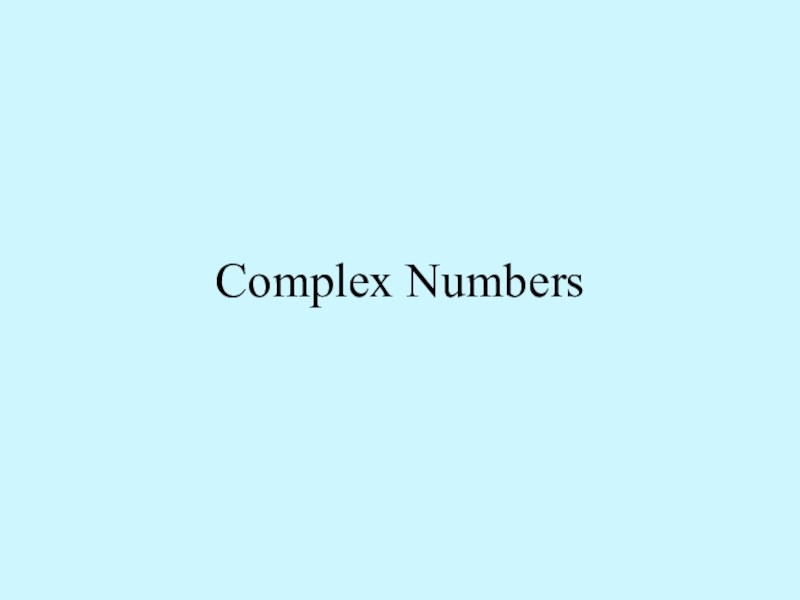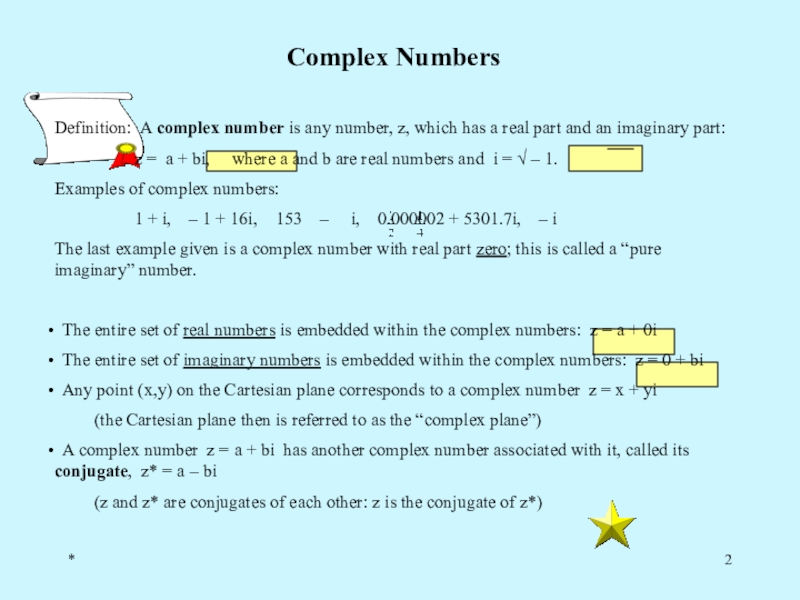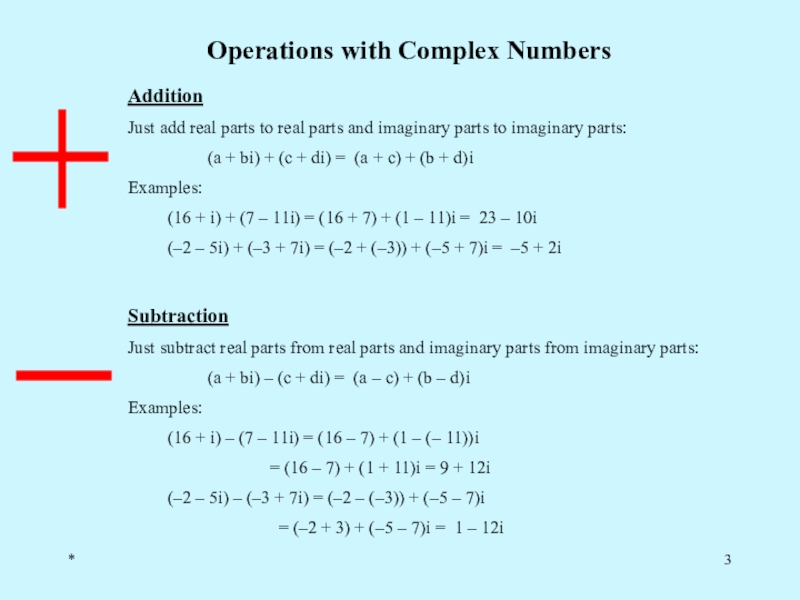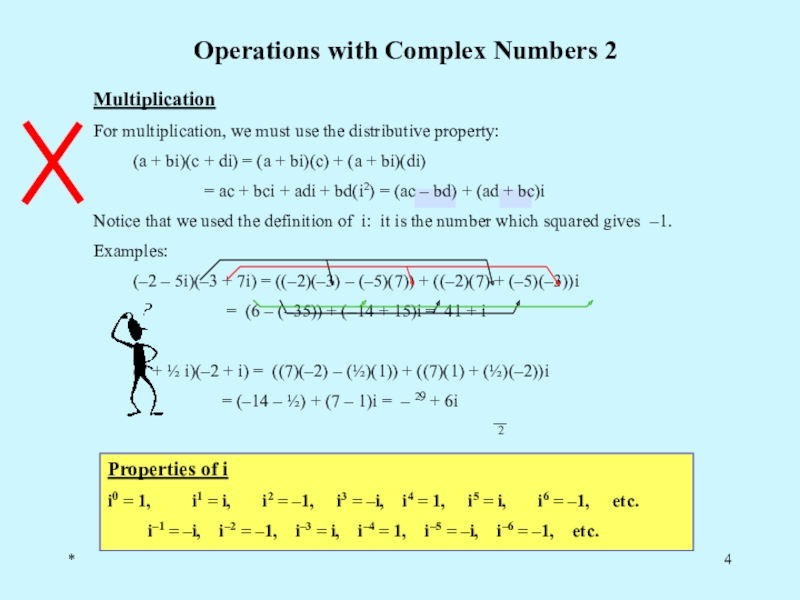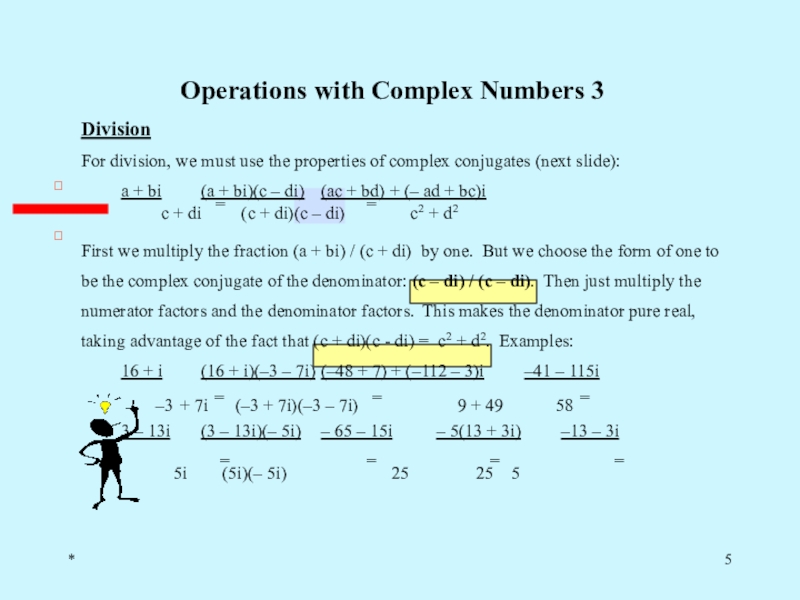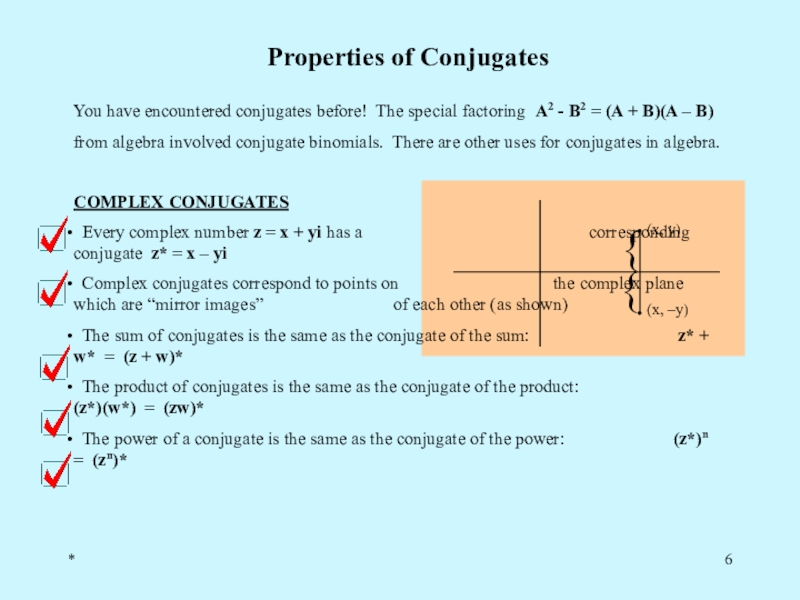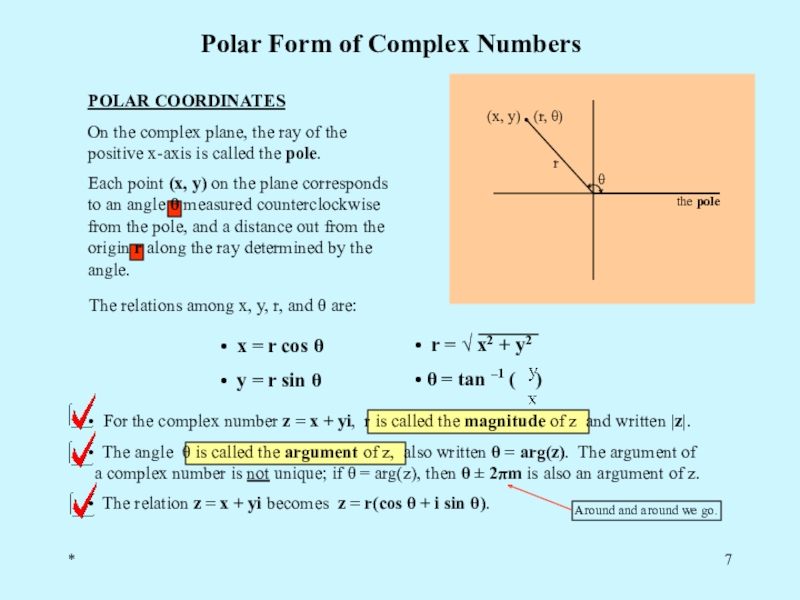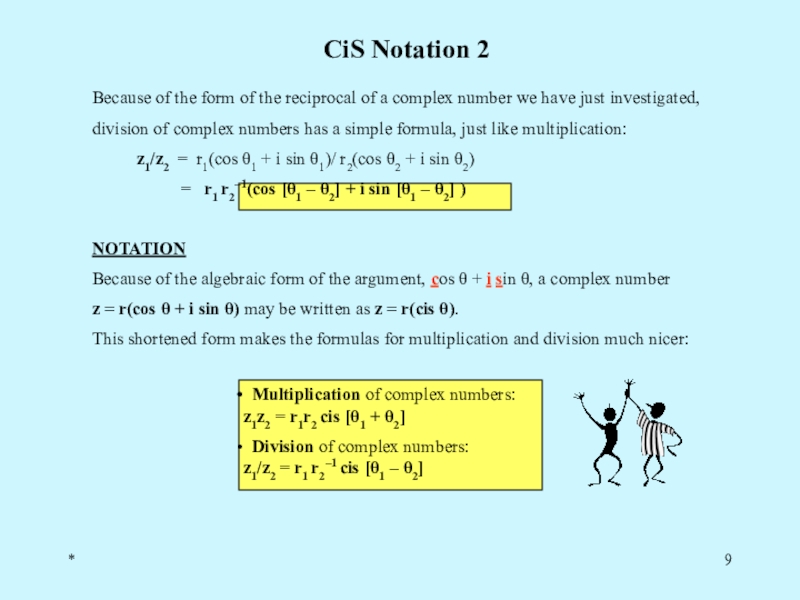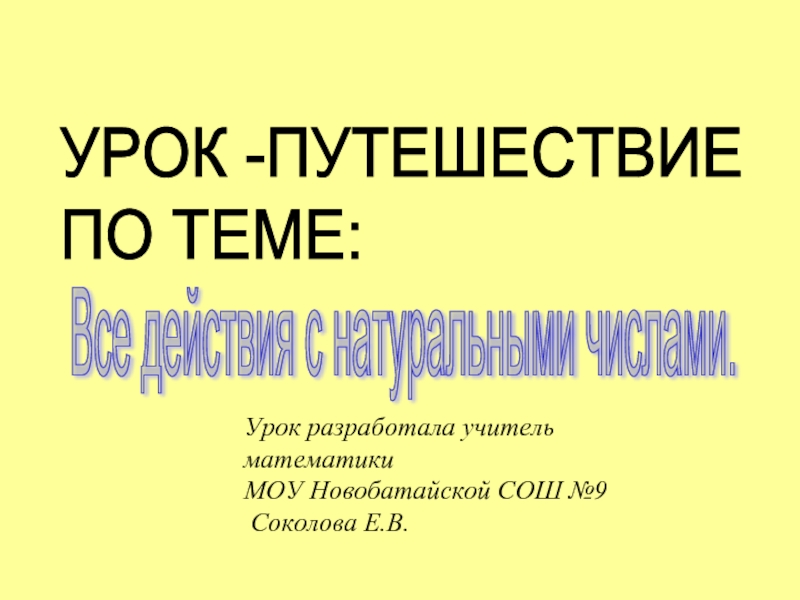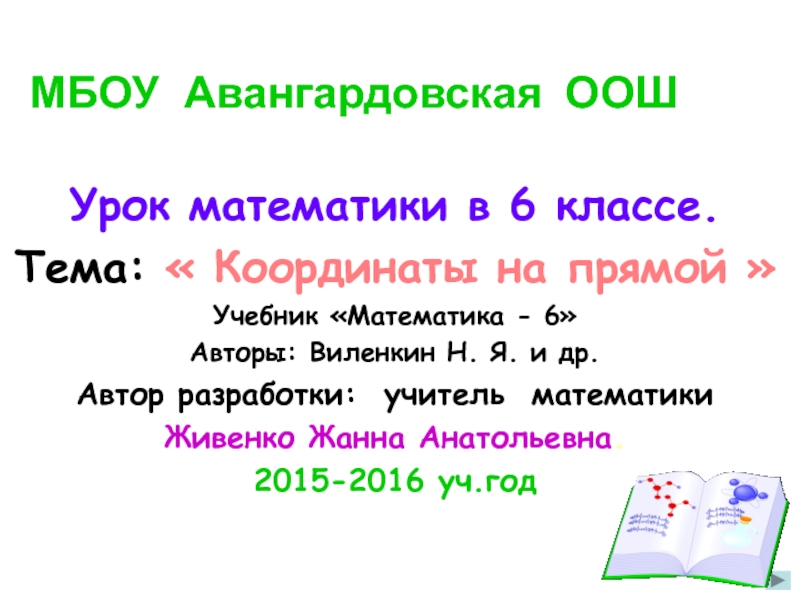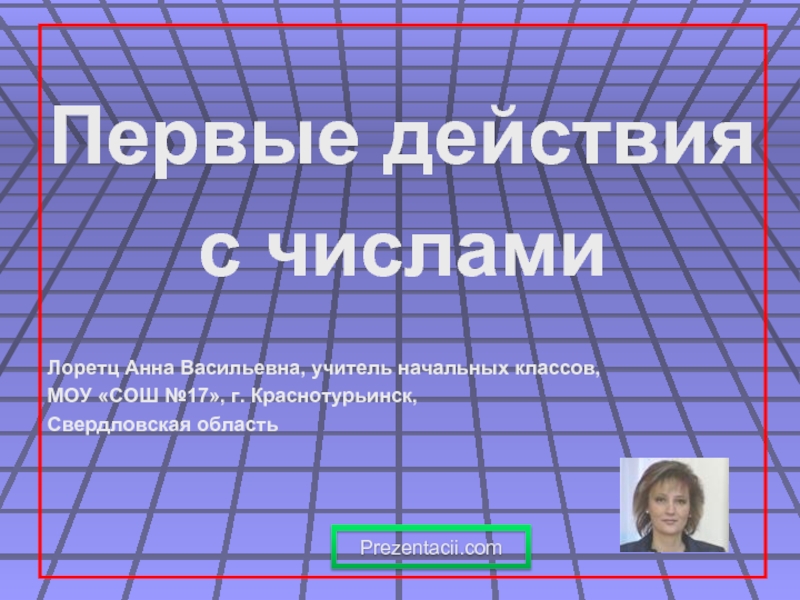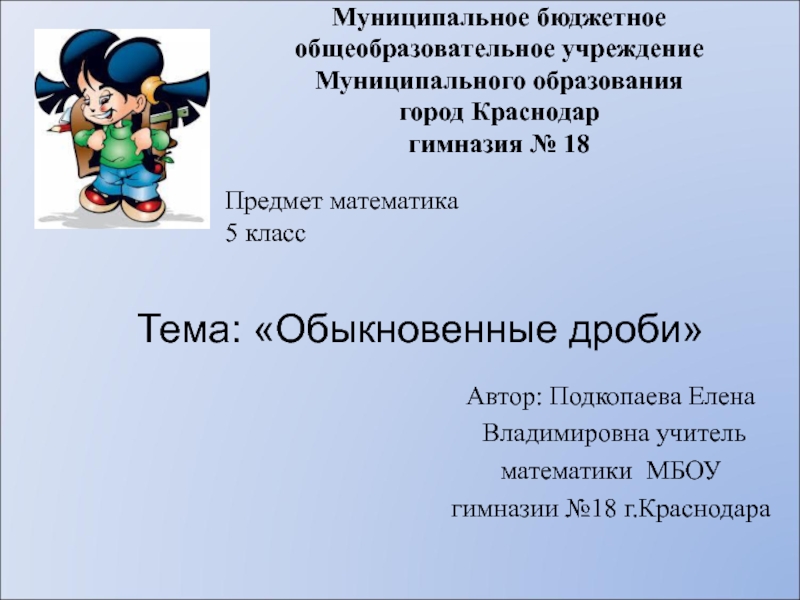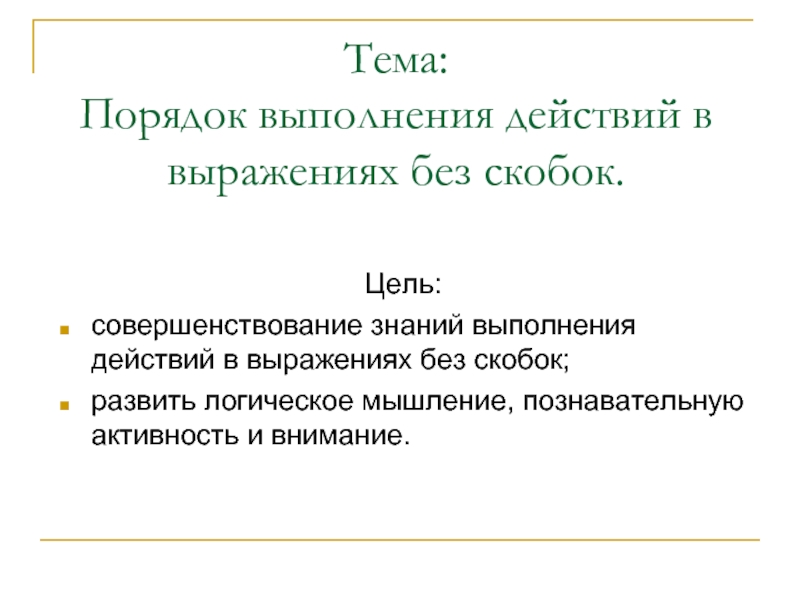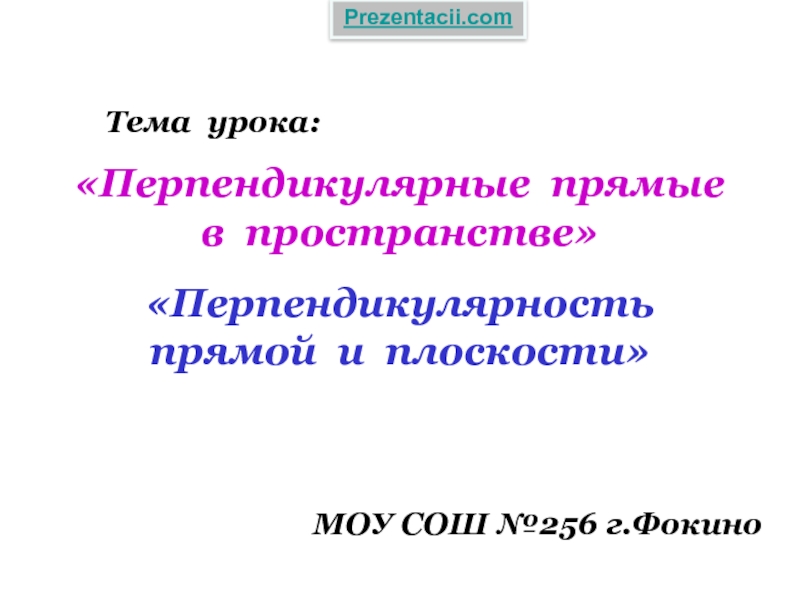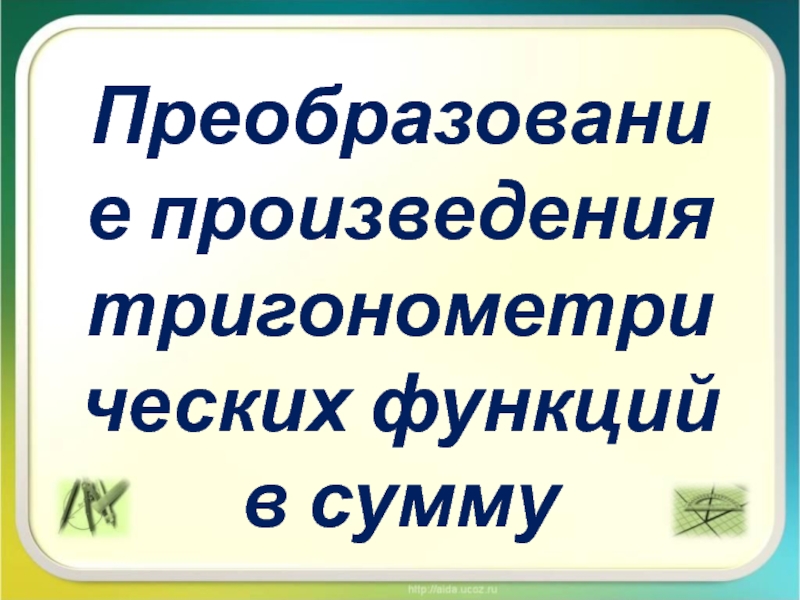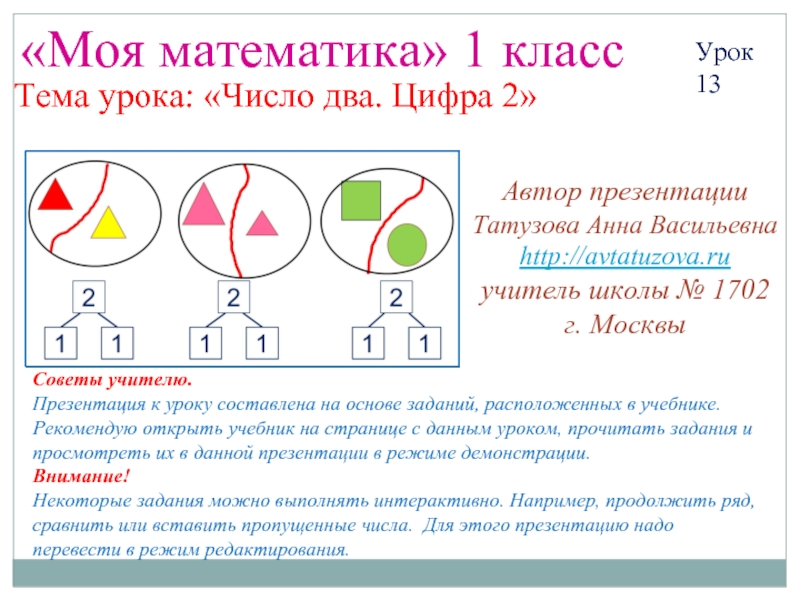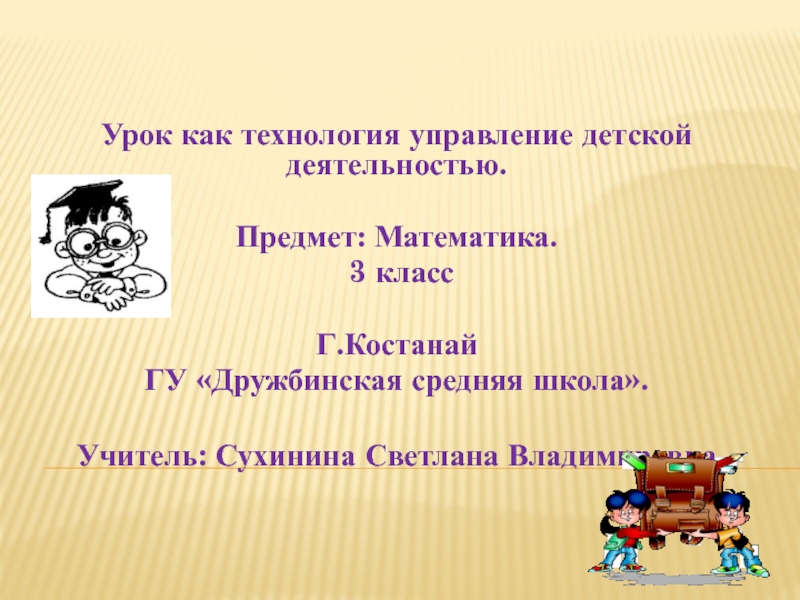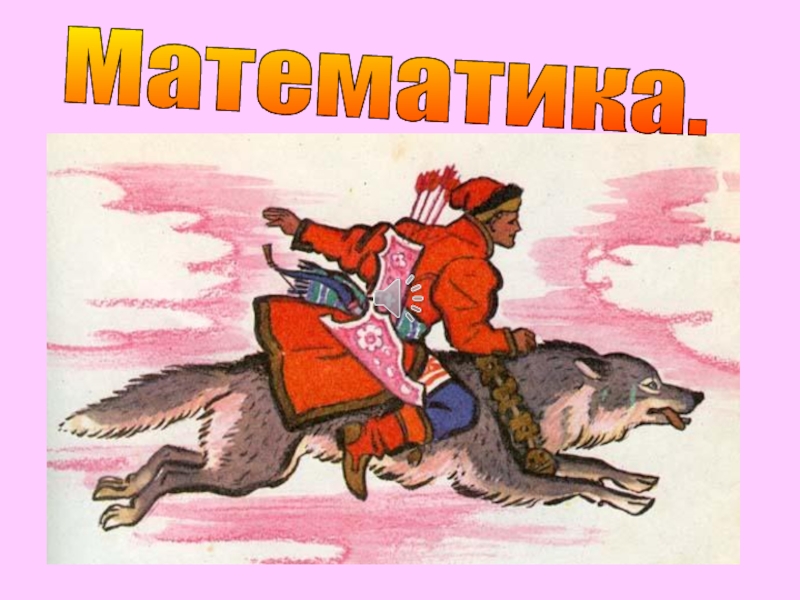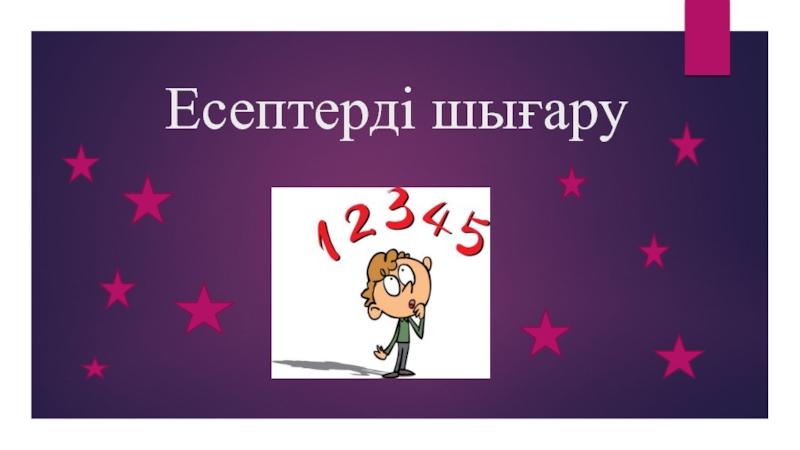has a real part and an imaginary part:
z = a
+ bi, where a and b are real numbers and i = √ – 1.Examples of complex numbers:
1 + i, – 1 + 16i, 153 – i, 0.000002 + 5301.7i, – i
The last example given is a complex number with real part zero; this is called a “pure imaginary” number.
The entire set of real numbers is embedded within the complex numbers: z = a + 0i
The entire set of imaginary numbers is embedded within the complex numbers: z = 0 + bi
Any point (x,y) on the Cartesian plane corresponds to a complex number z = x + yi
(the Cartesian plane then is referred to as the “complex plane”)
A complex number z = a + bi has another complex number associated with it, called its conjugate, z* = a – bi
(z and z* are conjugates of each other: z is the conjugate of z*)
